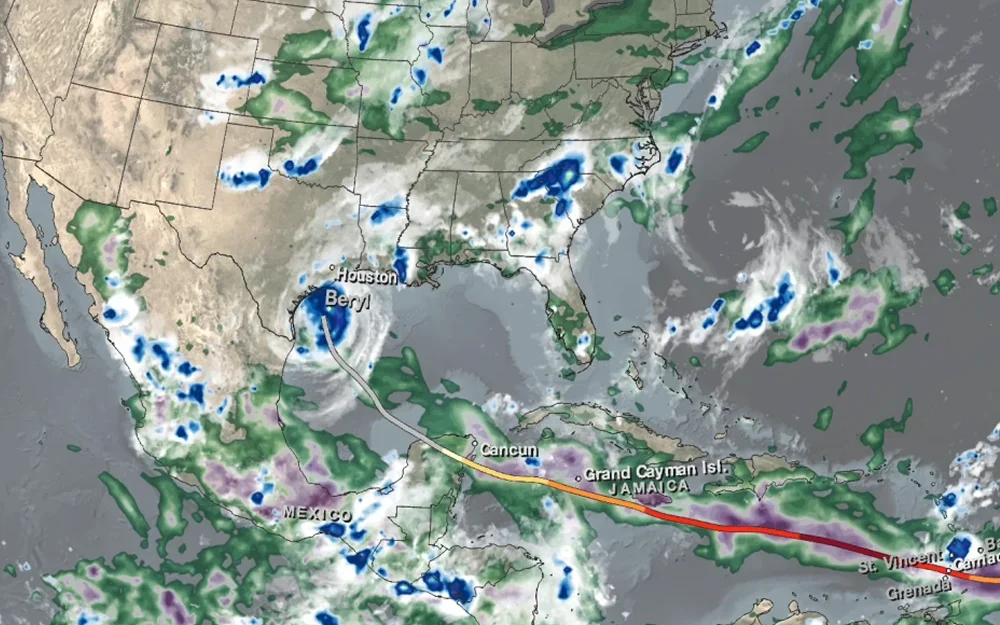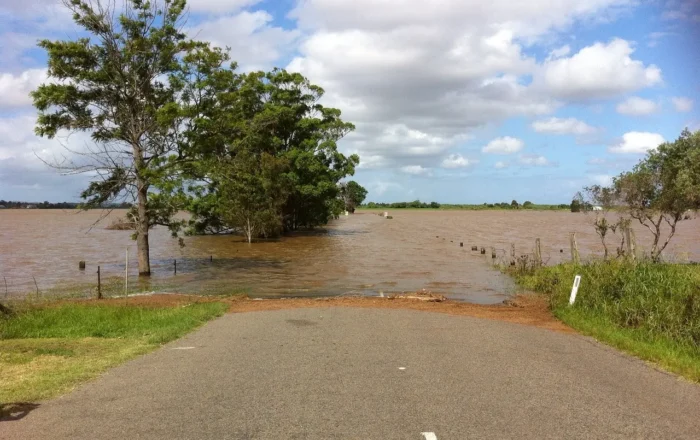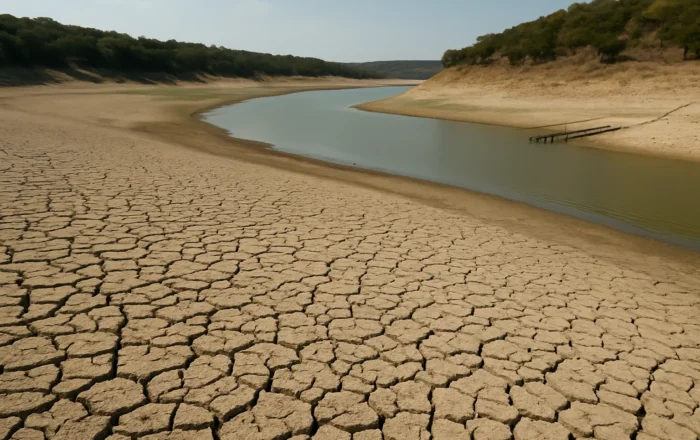What Causes Floods in Texas?
4 minute readFlooding in Texas is driven by heavy rain, hurricanes, rivers, and rapid urban growth, making it one of the most flood-prone states in the nation.
Home > BKV Energy Blog > All Posts > Atlantic Hurricane Season 2025 Outlook
3 minute read • Last update July 2025

On April 3, the Colorado State University Tropical Weather & Climate Research team released its forecast for the 2025 Atlantic hurricane season. They are expecting this season to bring “above normal” activity. This year’s hurricane season prediction is lighter than last year’s.
They are predicting 17 named tropical storms or hurricanes, meaning the storm has reached a development stage with sustained winds of at least 39 mph.
From those 17 storms, they predict 9 of them will reach the status of hurricane, and 4 will develop to at least category 3 with sustained winds of 111 miles per hour or more.
| Category | Number of Storms Predicted in 2025 |
|---|---|
| Named Storms | 17 |
| Hurricanes | 9 |
| Major Hurricanes | 4 |
The 2025 hurricane season for the Atlantic begins on June 1st and ends on November 30th.
There are four main drivers highlighted by researchers and scientists in their prediction for 17 named storms during the 2025 Atlantic hurricane season.
Warm water in the tropical North Atlantic Ocean has historically led to favorable conditions for the development of hurricanes. Tropical cyclones need warm water to develop into storms and major hurricanes.
In addition to warm waters, hurricanes require the right wind conditions to form and grow.
El Niño and La Niña are opposing climate patterns related to the direction and intensity of winds, sea water temperatures, and air pressure over the Pacific Ocean.
ENSO’s impact on hurricane development is well-documented.
The Sahel is a region on the African continent spanning from the Atlantic coast all the way to the Red Sea in the east and just south of the Saharan desert. This region is an ecological transition between the Sahara desert and greener grassland and savannah.
Scientists are predicting higher rainfall in the Sahel this year, which has been shown to lead to higher hurricane activity in the Atlantic in the past.
Rainfall in the Sahel can impact Atlantic hurricane development because it has been shown to impact winds in the upper-troposphere, which in turn impact vertical wind shear (change in speed and direction of wind that can lead to hurricane formation) over the Main Development Region in the tropical Atlantic.
Dust outbreaks from the Sahara can impact tropical cyclone formation by reducing sea surface temperatures ahead of the Atlantic hurricane season. This may be why scientists are predicting the 2025 hurricane season to be less active than 2024.
Colorado State University researchers compared their 2025 forecast to the average data from hurricane seasons past. Here’s how their prediction stacks up:
| Forecast Conditions | 2025 Prediction | Average (1991-2020) |
|---|---|---|
| Named Storms | 17 | 14.4 |
| Hurricanes | 9 | 7.2 |
| Major Hurricanes | 4 | 3.2 |
The April 2025 hurricane forecast from CSU also included predictions for where hurricanes strike land.
| Region | Region Description | 2025 Probability | 2024 Probability | 1880-2020 Probability |
|---|---|---|---|---|
| Entire U.S. Coastline | Entire U.S. Coastline | 51% | 62% | 43% |
| U.S. East Coast | Florida to Main | 26% | 34% | 26% |
| Gulf Coast | Texas, Louisiana, Alabama, Mississippi, and Florida | 33% | 42% | 27% |
Last year, Hurricane Beryl wreaked havoc on the Texas grid along the state’s Gulf Coast, particularly in the Houston area. It was devastating to human life, animal life, residential and commercial property, and the electric grid.
This forecast predicts a hurricane season with above-normal activity, compared to last year’s hyperactive prediction. If or when a hurricane makes landfall, major hurricanes are expected to inflict significant damage to the infrastructure providing power to Texans. Here’s how you can prepare to protect your family, home, and pets from a potential hurricane.
Familiarize yourself with the meaning of different hurricane alerts and warning systems so you can begin to prepare long before a hurricane strikes.
Graham Lumley, Digital Marketing Manager at BKV Energy, leads digital and traditional marketing strategies, focusing on educating Texans about the state's deregulated energy market. With over 8 years of marketing experience, he creates content to help consumers understand and save on their energy bills, bringing a fresh and dynamic approach to the industry.

Flooding in Texas is driven by heavy rain, hurricanes, rivers, and rapid urban growth, making it one of the most flood-prone states in the nation.

Texas has faced decades of drought cycles, but is the state still in a drought today?
Get $50 off your electric bill!
Use code BKVEJOINUS50
Enter your zip code to shop BKV Energy's affordable, fixed-rate Texas electricity plans. Use the promo code for $50 off your electric bill.